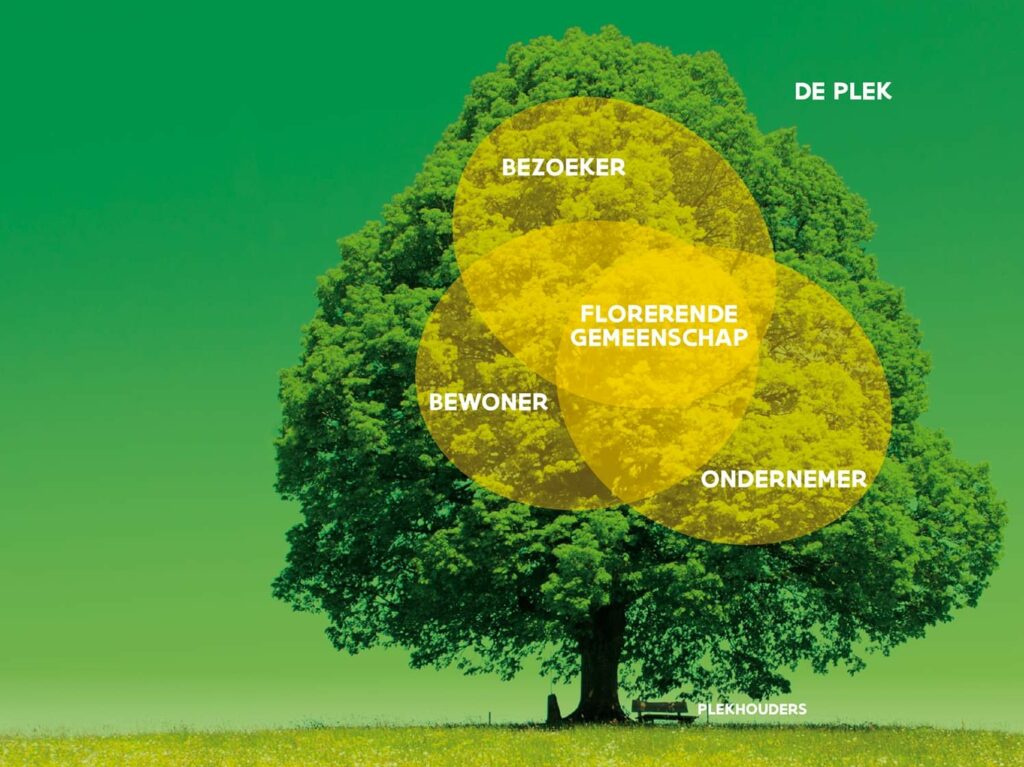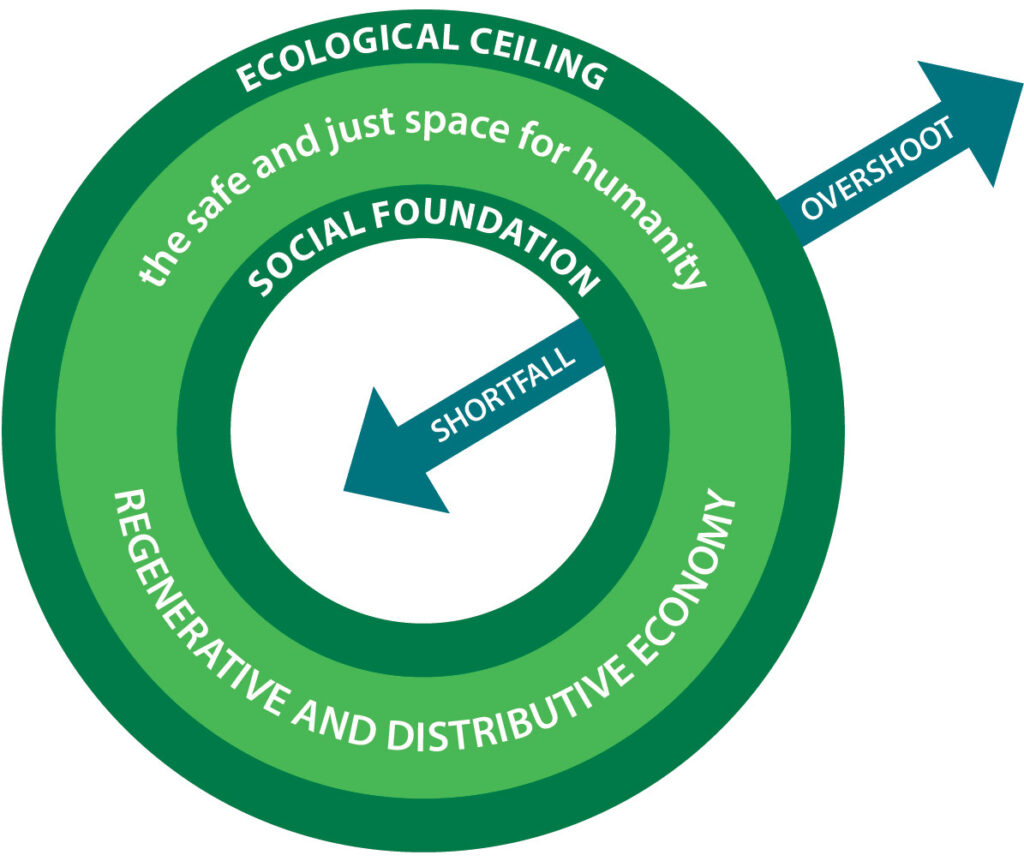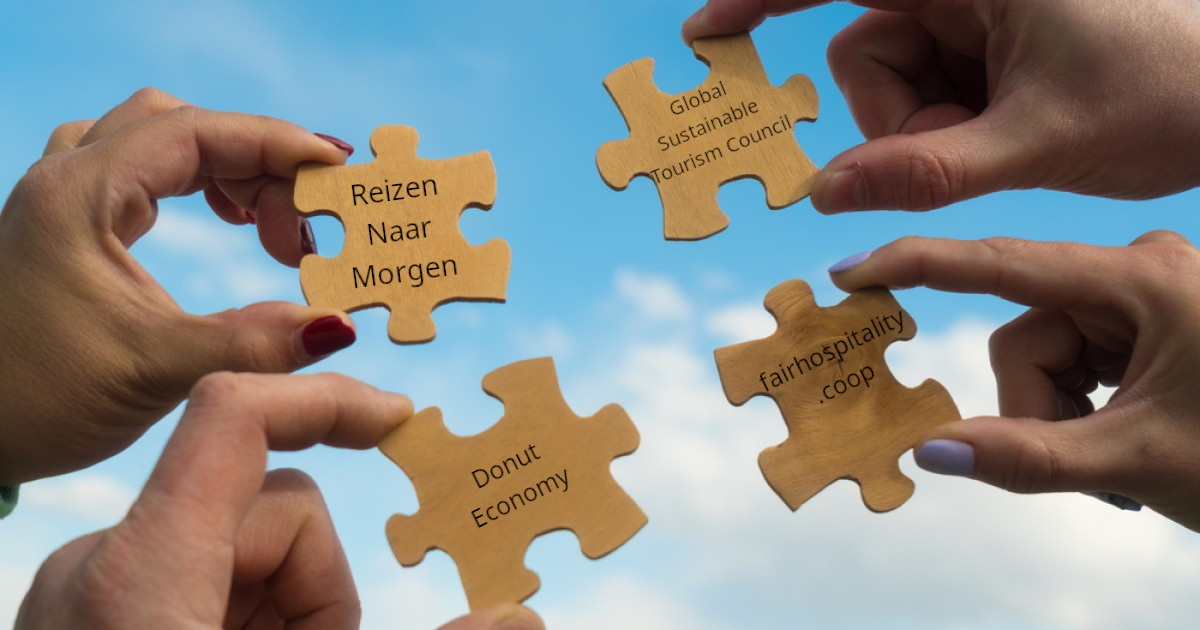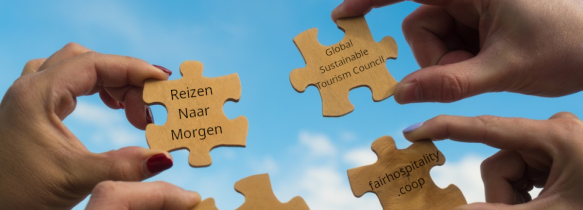
Tourism Flanders’ pioneering vision is known as “Traveling to Tomorrow.” Some of this can be objectified through internationally accepted standards. The model worked out by the Global Sustainable Tourism Council (GSTC) aligns almost seamlessly with our local vision. And also the model of the Donut Economy fits it perfectly. “Travel to tomorrow” in global context, in other words.
Journeys to Tomorrow

Tourism Flanders’ “Travel to Tomorrow” vision focuses on creating a thriving destination in Flanders. The goal is to connect, inspire and sensitize organizations from the broad tourism industry. This vision emphasizes that tourism is more than economics. After all, they want the community to flourish. The visitor, the resident, the entrepreneur and the place let them develop into a balanced whole.
The GSTC model

The GSTC model, or Global Sustainable Tourism Council, sets global standards for sustainability in travel and tourism. The criteria are used for education and awareness, policy making, measurement and evaluation, and as a basis for certification. They are arranged in four pillars: sustainable management, socioeconomic impact, cultural impact and environmental impact. (Including resource consumption, pollution reduction, and biodiversity and landscape conservation).
The Donut Economy

With fairhospitality.coop, we are also inspired by the Donut Economy. This is an economic model developed by Kate Raworth. It measures prosperity by looking at fulfilling the wants and needs of everyone within the carrying capacity of the planet. The model is shaped like a donut, with the inner ring representing basic social needs (such as education and nutrition), and the outer ring representing ecological ceilings (such as climate change and biodiversity).
We can also translate it so that the inner ring is mostly about the SDGs, while the outer ring is quite clearly portrayed by the Stockholm Resilience Center. The goal is to stay in the “safe and just space for humanity,” that is, the space inside the donut. The important thing here is not to focus too much and certainly not only on the limits and limitations of the donut. There is enough space between the outer and lower circle on which to focus. The flourishing, inspiring and meaningful aspects as also described by Travels to Tomorrow are equally important.
“Traveling to tomorrow” in global context: Synergies
The GSTC model, the “Travel to Tomorrow” vision and the Donut Economy all share a common goal: to promote sustainability in tourism. They all recognize the importance of balancing economic, social and environmental impacts. They strive to use tourism as a tool to promote positive change, whether it is promoting sustainable management, minimizing negative socioeconomic and cultural impacts, or promoting positive contributions to conservation and community well-being. Because of these shared values, the GSTC model, the “Travel to Tomorrow” vision, and the Donut Economy can work seamlessly together to promote sustainable tourism.
That’s what fairhospitality.coop is committed to. Fairbnb.coop is only a means to that end; the platform is not the end in itself. Hence, we want to expand that with initiatives that help achieve these goals. In one of the next blogs, we will look more closely at the GSTC criteria and indicators and how that compares to the labels more familiar to us such as Green-Key, EU-Ecolabel and the like.


